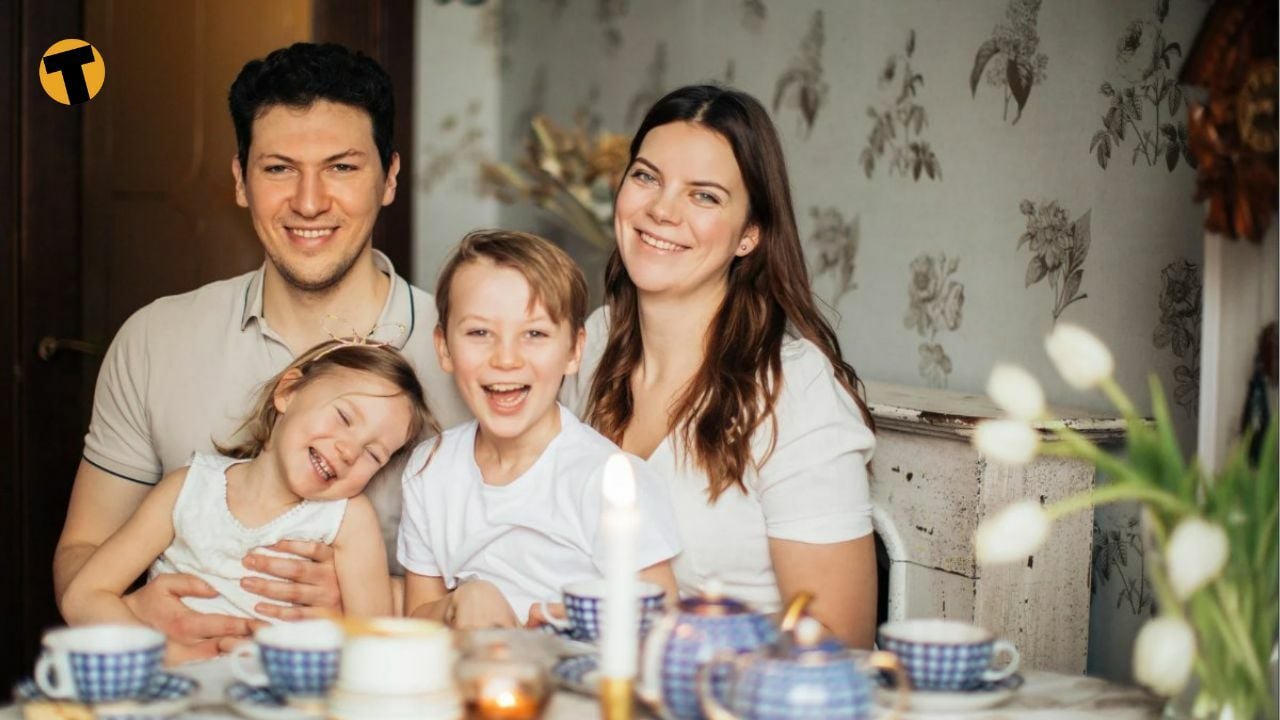World News
World news, global politics, business, technology, and culture—stay updated with breaking stories, international trends, and major events. Get the latest from The Thaiger, your trusted source for global news.
-
 Sponsored
Sponsored Thailand vs. the West: What expats save on healthcare each year
Healthcare in Thailand is much cheaper than in Western countries, making it a great choice for expatriates looking for affordable medical care. Both public and private healthcare options offer high-quality services, with savings of up to 80% on procedures like...
-

Air India flight returns to Hong Kong after mid-air emergency
Just days after the devastating crash of Air India flight AI 171, which claimed at least 270 lives en route to London, another Air India Boeing 787-8 Dreamliner was forced to turn back mid-air yesterday due to a suspected technical issue. The flight, AI 315, was bound for New Delhi from Hong Kong when the crew made the precautionary decision…
-

India tragedy: Black box recovered from fatal flight
The recovery of the black box from last week’s deadly Air India crash marks a crucial step in the investigation, potentially revealing vital insights into the cause of the tragic accident. Tragedy struck last Thursday, June 12, as Air India’s London-bound flight crashed shortly after takeoff from Ahmedabad, killing at least 270 people, including most of the passengers. Now, as…
-

Thai Airways exits rehabilitation plan after four years of operation
Thai Airways (THAI) announced yesterday, June 16, that the Central Bankruptcy Court officially approved the end of its rehabilitation process. The airline now plans to seek permission to relist its shares on the stock exchange by August. THAI shared the news via its official Facebook page, stating, “The Central Bankruptcy Court has ordered the termination of business rehabilitation. THAI is…
-

Airline service charges set to rise at 6 Thai airports this October
In a move that will impact passengers at six key airports, the Department of Airports (DoA) has announced an increase in passenger service charges (PSC) for both domestic and international departures. Starting October 1, the domestic charge will rise from 50 baht to 75 baht per person, while the international charge will jump from 400 baht to 425 baht per…
-

Indian man quizzed after bomb scare on Phuket flight
A 52 year old Indian man was arrested for questioning after a bomb threat forced an Air India flight to make an emergency landing at Phuket International Airport yesterday morning. The alarming incident triggered a swift security response, with 156 passengers onboard caught in the tense drama. The flight, AI 379, was en route from Phuket to Delhi when, around…
-

Thai singer shares connection to Air India crash survivor
A Thai singer, who survived a plane crash in Surat Thani in 1998, revealed that he once sat in the same seat number as the British survivor of the recent Air India crash. The singer, Ruangsak “James” Loychusak, took to his Facebook page, Jamesruangsak, to comment on the Air India crash near Ahmedabad, India, which occurred today, June 13. In…
-

Air India flight AI171: Experts probe deadly takeoff crash (video)
A devastating crash involving Air India Flight AI171 has left 241 people dead and raised serious questions about what went wrong just moments after takeoff. The Boeing 787-8 Dreamliner, en route from Ahmedabad to London Gatwick, plunged shortly after departing Sardar Vallabhbhai Patel International Airport yesterday, June 12, just 1.5km from the runway. The tragic incident marks the first fatal…
-

Bomb threat forces emergency landing of Air India flight in Phuket
Following the Air India flight crash yesterday, a bomb threat forced another flight from the troubled airline to make an emergency landing at Phuket Airport today. Flight AI 379, en route from Phuket to Delhi with 156 passengers aboard, was diverted to Phuket after a bomb threat message was discovered on board. At 9.30am today, June 13, Phuket International Airport…
-

Thailand’s ageing F-16s, what’s the next move?
Thailand’s Royal Thai Air Force (RTAF) is facing an important challenge: how to replace its ageing fleet of F-16 fighter jets while keeping pace with regional security demands and budget realities. For decades, the F-16 has been the backbone of Thailand’s air defence. But with many of these jets approaching their retirement age, the RTAF has now shifted gears, looking…
-

‘Screw-up’ at Suvarnabhumi: Broken bolt brings escalator to a halt
An escalator at Suvarnabhumi Airport gave travellers a fright this week when it suddenly ground to a halt — but no injuries were reported and engineers have already fixed the glitch. The malfunction occurred around 11pm on Wednesday, June 11, at an escalator linking the APM train station to the new SAT-1 terminal. A video clip of the incident quickly…
-

Air India flight to London crashes post-takeoff with 242 passengers (video)
Tragedy struck in Ahmedabad, India, this afternoon when an Air India flight bound for London Gatwick crashed just moments after takeoff. Flight AI171, carrying over 240 people, crashed into a residential area, sending a massive plume of black smoke into the sky. The airline has called the incident a “tragic accident,” and authorities are investigating the cause. The Boeing 787-8…
-

Thailand to launch direct flights to the US after aviation boost
Thailand is gearing up to reconnect with the United States through direct flight routes, as part of the government’s ambitious plans to turn the country into Southeast Asia’s aviation hub. Transport Minister Suriya Jungrungreangkit announced accelerated efforts to establish non-stop services between Thailand and the US, a move that could significantly enhance the country’s global standing. Currently, no airline offers…
-

British influencer reunited with stolen Lamborghini in Thailand
A British influencer and off-road racing fanatic has been reunited with his stolen £220,000 (9.7 million baht) Lamborghini – eight years after it was stolen by a sophisticated international car-smuggling gang and shipped to Thailand. Mark McCann snapped up the bright green Lamborghini Huracan Spyder back in 2016 as part of a high-end car rental venture. Charging punters £800 (35,000…
-

Hung out to dry! Mystery over death of Thai worker in Israel
A Thai family is crying foul after a young agricultural worker was found hanged in Israel, despite showing no signs of despair before his sudden death. Grieving relatives of 27 year old Athin “Arm” Seeluang, from Udon Thani, say they simply don’t believe he took his own life, and are calling for a full investigation into the tragedy. The alarm…
-

Thai Smile shuts down after a decade of losses
After over a decade of struggling with continuous financial losses, Thai Airways International (THAI) has officially dissolved its wholly owned subsidiary, Thai Smile Airways. The decision marks the end of the budget airline’s operations, bringing a turbulent chapter to a close. The dissolution was officially announced to the Stock Exchange of Thailand (SET) on June 5, following a resolution passed…
-

Vietjet Thailand slashes fares by 50% with ‘Friend Power Pack’
Vietjet Thailand is offering significant savings on airfares through a Friend Power Pack package, providing discounts of up to 50% on over 50,000 tickets. This promotion covers both domestic and international routes throughout 2025, allowing passengers to plan their trips affordably and conveniently. Bookings are open from today, June 10, to July 10, with travel available from June 15 to…
-

Emirates lands a double delight with new SE Asia flights
Emirates is turning up the heat in Southeast Asia with the launch of two brand-new routes, to Vietnam’s coastal gem Da Nang and Cambodia’s cultural heartland, Siem Reap, both flying via Bangkok. The Dubai-based airline kicked off the Da Nang route on June 2, followed by Siem Reap on June 3, pushing its regional network to 23 destinations. Both flights will…
-

Thai Airways and Turkish Airlines sign joint business agreement
Thai Airways and Turkish Airlines have signed a Joint Business Agreement (JBA) to enhance flight services between Bangkok and Istanbul. The collaboration was formalised during the 81st IATA Annual General Meeting in New Delhi, India, marking a significant step in strengthening relations between Thailand’s flagship carrier and Turkey’s national airline. The agreement builds upon Thai Airways’ successful launch of a…
-

A historic win: Opal becomes Thailand’s first Miss World
Thailand has made pageant history after 25 year old Suchata Chuangsri, known as Opal, was crowned Miss World 2025—the first Thai woman to win the global title in 74 years. View this post on Instagram A post shared by Miss World (@missworld) The 72nd Miss World grand finale was held on May 31 at the HITEX Convention Centre…
-

Air Cambodia relaunches Bangkok-Sihanoukville flights
Air Cambodia has restarted its connection between Sihanoukville and Bangkok, resuming twice-weekly flights on May 22. The airline now operates this route every Thursday and Sunday using an Airbus A320 with 180 seats, providing much-needed convenience for travellers heading to Cambodia’s southern coast and its idyllic islands. While Air Cambodia already offers daily services between Phnom Penh and Bangkok, it…
-

Chinese ditch Thailand for cheaper, drama-free Cambodia
While Thailand scrambles to revive its struggling tourism sector, neighbouring Cambodia is quietly winning over Chinese holidaymakers — and it’s pulling out all the stops. In a bold push to attract foreign tourists, Cambodian officials declared 2025 the “China-Cambodia Tourism Year,” and it’s already paying off. Just last week, a record-setting group of 1,000 Chinese tourists from Wuxi, near Shanghai,…
-

Flying in style: THAI unveils plush new seats for A321neo jets
Travellers aboard Thai Airways are in for a stylish treat — the airline is getting a luxury cabin makeover with a fresh batch of award-winning R3 Economy Class seats, thanks to a brand-new collaboration with RECARO Aircraft Seating. The partnership, announced this week, sees RECARO deliver 32 shipsets of its long-range R3 seat for Thai Airways’ A321neo fleet. The first delivery…
-

27 animals seized, 2 arrested in Bangkok airport wildlife sting
Thai police dealt a major blow to wildlife traffickers after intercepting 27 exotic animals hidden in luggage on two separate flights at Suvarnabhumi International Airport yesterday. Two suspects were arrested in connection with the smuggling attempt. The first haul included 20 blue iguanas and two sulcata tortoises found in the luggage of an Indian passenger preparing to board flight TG325…
-

Green with envy: Beware of wolves in eco-clothing
British politics in the wake of the post-Jeremy Corbyn era has been defined by confusion, disillusionment, and an overwhelming sense of political homelessness on the left, but does the Green Party have the answer? In 2017, Corbyn galvanised millions of disenchanted and previously apathetic voters behind a vision of genuine change, only for his hopes to be dashed, sabotaged by…
-

Thai transgender YouTuber alleges sexist treatment at Chinese airport
A renowned Thai transgender YouTuber accused officers at a Chinese airport of being sexist during her family trip to China. The YouTuber, Nisamanee “Nut” Lertvorapong, shared her unpleasant experience on her Instagram account, @nisamanee_nutt. She posted a video with a caption that read… “No one should be treated differently, no matter what their gender is. I came here (China) with seven…
-

Thai ghost comedy makes Cannes history
A possessed vacuum cleaner, a grief-stricken husband, and a ghostly wife have just swept Thai cinema into the global spotlight. A Useful Ghost, a bizarre yet moving political horror-comedy directed by Ratchapoon Boonbunchachoke, has made history as the first-ever Thai film to win the Grand Prix at Critics’ Week, a parallel section of the prestigious Cannes Film Festival. The independently produced…
-

Thai airports to boost services for elderly and disabled passengers
Flying in Thailand is about to get a major upgrade—especially for those who need it most. The Civil Aviation Authority of Thailand (CAAT) is rolling out a new set of regulations aimed at dramatically improving service standards for passengers requiring special assistance. Whether you’re elderly, injured, or living with a disability, these new rules are designed to make air travel…
-

Ex-British air hostess claims she’s been ‘suitcased’ in drug bust
A former British air hostess claims she’s been stitched up in a £1.5 million (66.5 million baht) drug bust in Sri Lanka, insisting she had no clue 46 kilogrammes of cannabis was stuffed in her suitcase. Charlotte May Lee is facing years behind bars in a notorious Sri Lankan prison after being arrested in Colombo with a suitcase stuffed with…
-

UK teen faces possible life sentence for cannabis smuggling
A missing UK teen feared lost in Thailand has turned up 4,000 miles away—in handcuffs, facing a possible life sentence for allegedly smuggling cannabis into Georgia. Bella Culley, 18, from Billingham, County Durham, was reported missing on Tuesday, May 13, after family members lost contact with her during what they believed was a solo trip through Thailand. She had previously…
-

Vietjet transfers 50 Boeing planes to Thai arm in regional shake-up
Vietjet and Boeing have inked a landmark agreement to transfer up to 50 Boeing 737 aircraft to Vietjet Thailand, boosting Thailand’s presence on the regional air travel map. The signing took place with plenty of diplomatic fanfare, witnessed by Vietnam’s Prime Minister Pham Minh Chinh and Thailand’s Prime Minister Paetongtarn Shinawatra, who was in Hanoi for her first official visit to Vietnam in over a decade. “This agreement…
Broke? Find employment in Southeast Asia with JobCute Thailand and SmartJob Indonesia. Rich? Invest in real estate across Asia with FazWaz Property Group or get out on a yacht anywhere with Boatcrowd. Even book medical procedures worldwide with MyMediTravel, all powered by DB Ventures.






























